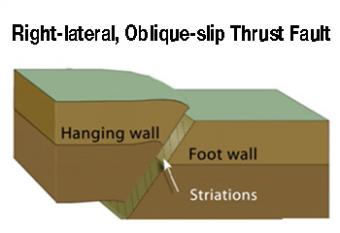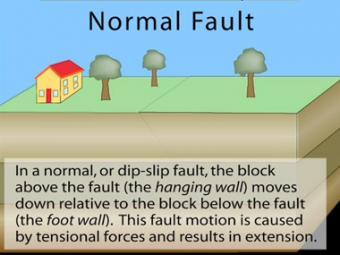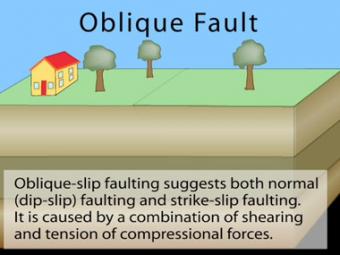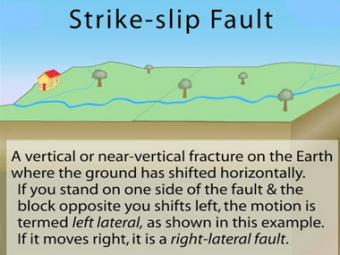20s Novice Spanish

What causes a fault to move in oblique direction?
On this fault, the right-lateral, oblique-slip faulting suggests both thrust faulting and strike-slip faulting. It is caused by a combination of shearing and compressional forces. Nearly all faults will have some component of both dip-slip (normal or reverse) and strike-slip, so defining a fault as oblique requires both dip and strike components to be measurable and significant.

In a normal fault, the block above the fault moves down relative to the block below the fault. This fault motion is caused by extensional forces and results in extension. Other names: normal-slip fault, tensional fault or gravity fault. Examples: Sierra Nevada/Owens Valley; Basin & Range faults.

This left-lateral oblique-slip fault suggests both normal faulting and strike-slip faulting. It is caused by a combination of shearing and tensional forces. Nearly all faults will have some component of both dip-slip (normal or reverse) and strike-slip, so defining a fault as oblique requires both dip and strike components to be measurable and significant.

In a strike-slip fault, the movement of blocks along a fault is horizontal. The fault motion of a strike-slip fault is caused by shearing forces. Other names: transcurrent fault, lateral fault, tear fault or wrench fault. Examples: San Andreas Fault, California; Anatolian Fault, Turkey.
We encourage the reuse and dissemination of the material on this site as long as attribution is retained. To this end the material on this site, unless otherwise noted, is offered under Creative Commons Attribution (CC BY 4.0) license